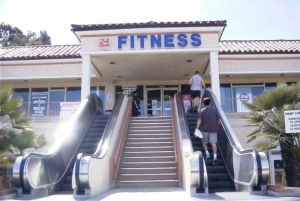I am just finishing up a packed few days at TEDMED 2013 as a FrontLine Scholar. There were over 1,800 people there, from a broad spectrum of occupational backgrounds, countries, skills, and areas of interest within healthcare. This made for an unending cascade of “unexpected connections,” the theme of the conference. Indeed, though there were many engaging speakers who told stories about turning personal tragedies into discoveries and new passions, to me, the real action at TEDMED was away from the conference stage at “The Hive” (set up with booths showcasing innovators as well as comfortable and open meeting spaces). I met dozens of amazing people, with whom I had dozens of thought-provoking conversations. I will follow with another blog post about some of the specific companies that I met and spoke with at The Hive. There is more to write about from 3 1/2 days at TEDMED than can fit in a “short” blog post.
Here are some of the overall themes that emerged at TEDMED this year:
- Watch your backs! Those entrenched in the current model of the healthcare system need to be innovating and disrupting themselves from within their own organizations, or else risk being out of business in a short number of years. Lip service to change will not suffice. There are many, many companies and innovators taking aim at current models of healthcare, and while most of these companies will fail, and while change may be slow and halting, it will happen.
- Bottom-up innovation: Change in healthcare cannot come only from the ivory towers and healthcare professionals. As a doctor at UCSF, I recognize that this means me. America Bracho spoke passionately about how innovative ideas should come from within local communities in a bottom-up fashion rather than a top-down manner. We in the healthcare establishment need not only to listen, but to include the people who are most easily able to identify their actual problems and the potential solutions.
- Interdisciplinary problem-solving: As discussed by Tim Brown in Design Thinking, to creatively and successfully tackle a big problem, an interdisciplinary team is needed. Five doctors sitting in a room are not going to solve a major healthcare problem. We need engineers and patients, designers and artists, marketers and people in finance. We need them to work together. The cross-disciplinary problems in healthcare require cross-disciplinary attention. I was encouraged to see how many talented people with backgrounds outside of healthcare are now turning their attention to solving healthcare-related problems. While some are doing so with a Willie Sutton “that’s where the money is” philosophy, most are truly dedicated to innovating and solving important problems, and we need their energy and their ideas.
- Courage: Have the courage to ask difficult questions that everyone else is afraid to ask, and to pursue the answers in ways that other people are afraid to pursue.
The popular themes among the startup companies at the Hive (or discussed in speeches):
- Medication adherence. This was true at the mHealth Summit several months ago and remains true. There is a lot of attention being paid to trying to track, measure, and improve medication adherence. Some of the companies at TEDMED: AdhereTx, AdhereTech, GeckoCap, NudgeRx, RxAnte, and others. There are a number of different approaches being tried, from “smart pill bottles” to reconciling claims data with EHR data.
- Crowdsourcing. This concept is being applied across different fronts and in different ways. Docphin is creating a social experience around reading medical journals, allowing clinicians to see what the most popular articles are in their field or across all fields. Science Exchange is creating a TaskRabbit for scientific tasks, matching scientists who have a particular skill with those who have a specified task requiring that skill. UpRise is converging all of the patient education materials that they can into one common platform for distribution to patients. Crowdmed is applying the wisdom of the crowd to diagnosing diseases. Roni Zeiger spoke about “networks of microexperts,” allowing patients to share their knowledge and best practices, announcing his company, SmartPatients. Larry Brilliant spoke about infection monitoring tools for public health, like FluNearYou.
- Psychosocial and behavioral interventions. The companies on this list included Empower Interactive, Healthify, Omada Health, and Sense Health.
- Digitizing the patient. (Slight tangent– Jay Walker made a great point that we don’t really have a word for what to call people in the healthcare context who aren’t sick, ie not “patients” in the traditional sense. Do we just call them healthcare consumers?) There is a ton of work being done in terms of capturing physical and biometric data to augment the clinical data available today, both expanding the scope of the type of data we currently collect but also expanding out into the home (shameless plug for my JAMA Internal Medicine commentary). At MIT, they are developing a portable set of glasses that allow an easier view of the retina as a “window into systemic diseases.” There are sensors for everything– oxygen, heart rate, falls– you name it, somebody is building it, and the data is most often now able to be transmitted wirelessly to somebody, somewhere (what we’re going to do with all of it workflow-wise is another question for another day!)
I would love to hear from others who were at TEDMED or following via Twitter or TEDMEDLive to hear your thoughts and opinions. I’ll be blogging more later about other aspects of TEDMED…




